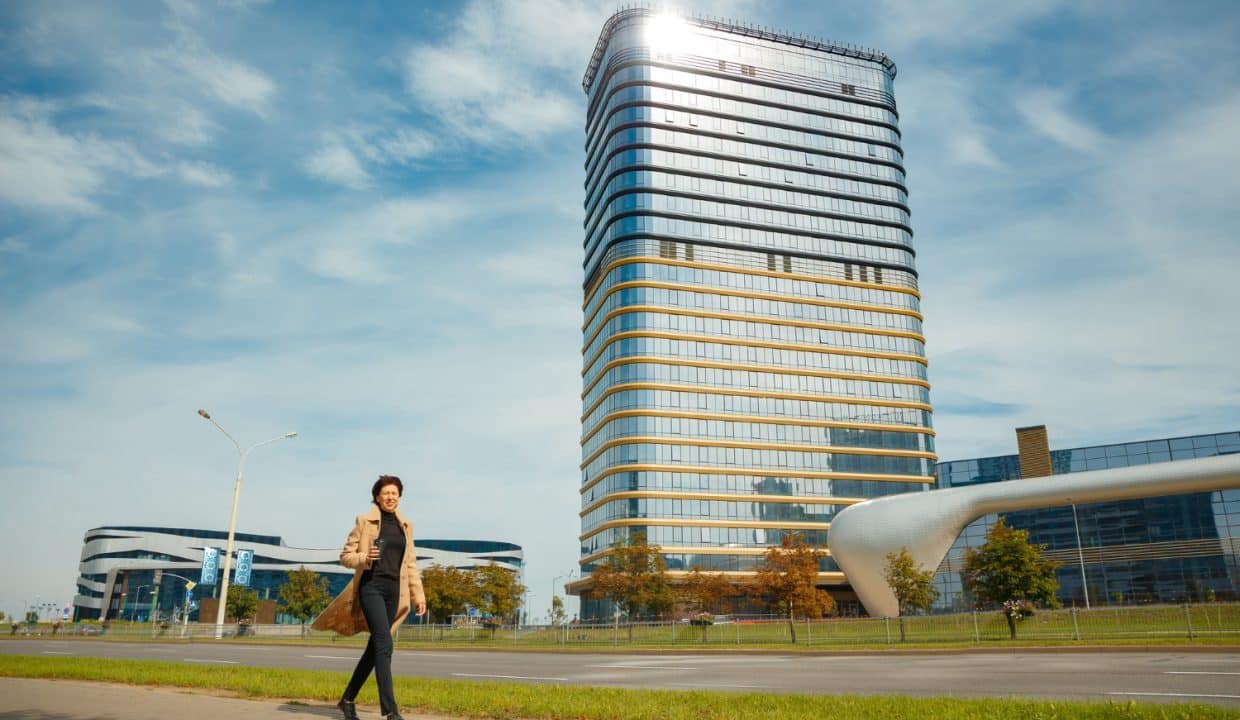The Impact of AI and Robotics on Commercial Real Estate Design
The commercial real estate sector is undergoing a paradigm shift driven by the rapid advancement of artificial intelligence (AI) and robotics. These technologies are reshaping how buildings are constructed and managed but fundamentally altering how spaces are designed to meet the evolving demands of businesses and tenants. This blog explores how AI and robotics redefine commercial real estate design, from conceptualization to day-to-day operations.

AI in the Design Process: Smarter Spaces, Faster Solutions
1. Predictive Design and Data-Driven Insights
AI-powered design tools enable architects and developers to predict tenants’ needs by analyzing vast amounts of data. These tools consider demographic trends, employee productivity patterns, and environmental conditions to propose layouts and features that optimize usability and efficiency. For instance, office spaces designed with AI often include configurations that foster collaboration, improve air quality, and reduce energy consumption.
2. Generative Design
Generative design, an AI-driven process, allows architects to input design goals—such as maximizing natural light or minimizing construction costs—and generate thousands of design iterations in minutes. Developers can then select the most optimal blueprint, saving time and resources while ensuring a more intelligent use of space.
3. Sustainability Integration
AI helps design buildings with sustainability in mind by modeling energy consumption, water usage, and carbon footprints during the planning phase. Developers can incorporate renewable energy systems, efficient HVAC layouts, and materials with a lower environmental impact, aligning commercial properties with ESG (environmental, social, and governance) standards.
Robotics: Transforming the Construction Landscape
1. Automation in Construction
Robotics is revolutionizing construction by introducing automated machinery for bricklaying, welding, and concrete pouring. These robots increase precision, reduce waste, and shorten project timelines, translating to significant cost savings for developers. Companies like Fastbrick Robotics and Built Robotics are pioneering this space, automating tasks that were once labor-intensive and error-prone.
2. Modular Construction
Robotics is a crucial enabler of modular construction, where building components are prefabricated off-site in a controlled environment. These modules are then assembled on-site, speeding up construction and minimizing disruptions. This approach particularly appeals to large-scale commercial projects like warehouses, data centers, and retail spaces.
3. 3D Printing in Real Estate
3D printing technology, powered by robotics, is becoming increasingly popular for constructing commercial properties. It allows for creating complex structures with minimal material waste, making it a cost-effective and environmentally friendly alternative to traditional construction methods.
AI-Driven Building Management: The Smart Commercial Space
1. Real-Time Space Optimization
AI-powered sensors and software analyze how tenants use commercial spaces in real time, providing actionable insights to property managers. For example, AI can suggest reconfiguring underutilized areas into coworking spaces or lounges, ensuring that every square foot is optimized for tenant satisfaction.
2. Predictive Maintenance
AI and robotics are transforming building maintenance by predicting equipment failures before they occur. AI algorithms analyze data from sensors embedded in HVAC systems, elevators, and other infrastructure to identify potential issues, allowing for proactive repairs. Robotics complements this by performing routine inspections, reducing downtime, and enhancing operational efficiency.
3. Energy Efficiency
AI-powered building management systems dynamically adjust lighting, heating, and cooling based on occupancy and external weather conditions. By integrating with renewable energy sources, these systems lower utility costs and improve a building’s carbon footprint, making commercial spaces and buildings active to tenants and investors.
The Tenant Experience: Personalization at Scale
AI and robotics are not just about efficiency; they also enhance the tenant experience by personalizing interactions. For example:
- Innovative Workspaces: AI can tailor lighting and temperature settings based on individual preferences, boosting employee productivity and comfort.
- Automated Concierge Services: Robotics handle mundane tasks like package delivery, visitor check-ins, and even coffee runs in modern office buildings.
- Interactive Amenities: AI-enabled fitness centers, meeting rooms, and entertainment areas provide tailored recommendations and booking options based on user behavior.
Challenges and Considerations
Despite its benefits, the integration of AI and robotics into commercial real estate design comes with challenges:
- High Initial Costs: Implementing advanced technologies requires significant upfront investment.
- Data Security: Managing and safeguarding sensitive tenant data is critical.
- Skill Gaps: The industry needs professionals trained in AI and robotics to maximize their potential.
Looking Ahead
AI and robotics are no longer futuristic concepts but integral to modern commercial real estate. By driving efficiency, sustainability, and personalization, these technologies are setting new benchmarks for design and operation. As adoption grows, we can expect commercial spaces to become more innovative, adaptable, and increasingly aligned with the needs of a rapidly evolving workforce and consumer base.
For developers and investors, staying ahead of this technological curve is not just an option—it’s a necessity. The question is no longer whether to integrate AI and robotics but how effectively they can be leveraged to create the commercial spaces of tomorrow.

